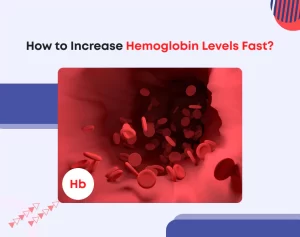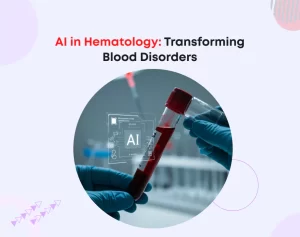
Iron Therapy for Iron Deficiency Anemia
Iron deficiency anemia is one of the most common types of anemia, affecting millions of people worldwide. This occurs when the body is short of iron, which is used in the process of synthesizing healthy red blood cells. Iron supplementation is a significant instrumental component of the therapy. It ensures that the patient’s body acquires the necessary amount of this element and directs its metabolism toward the path of improvement. In this blog, we will discuss what is iron therapy and how it is useful. We will also share a few methods or tips to handle iron deficiency anemia for a healthy life.
What is Iron Deficiency Anemia?
Iron deficiency anemia occurs when your body lacks sufficient iron to make hemoglobin, a protein in red blood cells responsible for oxygen transport. If there is not enough haemoglobin, the muscles and tissues of the body do not receive enough oxygen. This results in such problems as fatigue, weakness, and pale skin.
Signs and Symptoms of Iron Deficiency Anemia
Probably, one cannot immediately notice the presence of a lack of iron in the body. However, as the problem develops, the signs become more significant. Here are some common signs to look out for:
Dizziness: If the amount of oxygen in the blood decreases, a person can start feeling that one has aphonia, is light-headed, or simply faints.
Brittle Nails: Brittle nails are also a sign that shows that one lacks iron.
Cold Hands and Feet: Cold limbs are also caused by inadequate blood flow as well.
Pale Skin: A skin that is lighter than your normal skin tone, especially the face.
Fatigue: Experience of fatigue and lethargy even after enough rest.
These are some signals that should make you visit the doctor, who may advise you to undergo a blood test to ascertain the problem.
What is Iron Therapy?
Iron therapy is one of many treatments that helps to improve the level of iron in the body and cure anemia. There exist various routes and types of iron therapy, depending to the extent of a condition or the body’s reaction to the given therapy.
Types of Iron Therapy
Iron therapy has various types that might be appropriate for administration as per requirement. Now, we will explore the most common methods, which are:
1. Oral Iron Supplements
Oral iron supplements (Iron tablets) are preferred to be used as a treatment for iron deficiency anemia more than any other treatment. These pills are normally stretched over a day or taken twice a day, depending on the doctor’s advice. The best practices for taking oral iron are:
- Avoid Certain Foods: Some of the foods which hinder the absorption of iron include dairy products, coffee, and tea. These should be best avoided around the time when you are going to take your supplement.
- Take on an Empty Stomach: Iron is more effective if taken with water that is not acidic therefore it’s best taken on empty stomach. However, an empty stomach leads to stomach upsetting for some individuals.
- Pair with Vitamin C: Consumption of foods rich in vitamin C also assists in with increase intake of iron. In such cases, it is recommended that you take iron by drinking it with a glass of orange juice.
- Be Consistent: It may take a few months to restore iron levels, so it’s important to follow the treatment plan.
Oral iron supplements are a straightforward way to treat mild anemia, but it’s important to take them correctly for the best results.
2. Intravenous (IV) Iron Therapy
This treatment is for those who are not able to take oral iron supplements or those who want an immediate increase in the iron level in their bodies. Iron IV therapy is the method of administrating iron right into the vein of the patient.
Why choose IV iron therapy?
- Better Absorption: It is safe to use for individuals with digestive complications because it does not come into contact with the digestive system.
- Fewer Side Effects: Some people experience fewer side effects, like nausea, compared to oral supplements.
- Faster Results: IV iron works more quickly than oral supplements, making it ideal for severe anemia.
IV iron therapy is a faster, more efficient way to boost iron levels, especially for those who can’t tolerate oral pills.
3. Iron-Rich Diet
In addition to the supplements or IV therapy, an individual can also take foods rich in iron to ensure that their body gets the required amount of iron. It is useful in maintaining low levels of iron in the body, especially against future incidences of iron deficiency. Iron-rich foods to include are:
- Nuts and Seeds: Almonds, pumpkin seeds, and sunflower seeds are rich sources of iron. These when taken with Vitamin C, the amount of iron absorbed is enhanced.
- Red Meat: Heme iron is easily absorbed from food, and lamb is a great example as it is rich in both iron and protein.
- Leafy Greens: Spinach, kale, and collard greens contain non-heme iron, which is not as easily absorbed as iron from, say, meat.
- Legumes: Cereals and pulses, including beans, lentils, and chickpeas, are good plant sources of iron.
A diet of equal portions, rich in iron helps the body to produce healthy red blood cells. Further, they maintain iron level in the body after the therapy.
How Long Does Iron Therapy Take?
Iron therapy is not a one-day treatment. Recovery can take anything between weeks to months, depending on the breakdown of the red blood cells. Meanwhile, it can take months to replenish the body’s iron levels. Consequently, the blood tests need to be taken at least once a week. It will assess the effectiveness of the treatment and introduce corrections if necessary.
Side Effects of Iron Therapy
Oral iron supplements are not well tolerated by people due to their side effects, such as gastrointestinal complaints. Common side effects are:
- Constipation: The helpful ways to cope with it are to drink lots of water and consume foods with high fiber content.
- Nausea: Taking iron with food can reduce nausea, though it may lower absorption.
- Dark Stools: This is a harmless side effect of oral iron supplements.
While oral supplements are effective, managing side effects with diet and hydration can make the treatment more comfortable.
Side Effects of IV Iron Therapy
Often, IV iron therapy has fewer digestive side effects, but it has its own disadvantages. Common side effects are:
- Allergic Reactions: These are not very common, but sometimes, a patient may develop an allergic reaction to intravenous iron. Always receive treatment in a controlled setting.
- Temporary Discomfort: Some people may feel a bit of soreness or warmth around the injection site.
IV therapy has fewer digestive side effects, but it’s important to be aware of potential allergic reactions.
Who Needs Iron Therapy?
Iron supplementation should be given to all patients who have received the diagnosis of iron deficiency anemia. It’s also helpful for:
- People with Chronic Diseases: Conditions like kidney disease or gastrointestinal disorders can interfere with iron absorption, requiring more aggressive therapy.
- Vegetarians and Vegans: Since plant-based diets provide less absorbable iron, vegetarians may need extra support from iron supplements.
- Pregnant Women: It brings about increased iron requirements in the body and therefore iron therapy is often necessary in pregnancy.
If you’re at risk of iron deficiency, iron therapy can be a lifesaver. This is especially those people who have medical conditions, which reduce their ability to absorb the mineral.
Finishing Up
Iron therapy is essential in managing iron deficiency anemia. Moreover, it could be done orally or through intravenous administration, or even by consumption of food rich in iron. As for all of them, they are all different, but they stem from the same aim, of increasing your iron levels and therefore enhancing your well-being. Controlling the conditions experienced by a person diagnosed with iron deficiency anaemia and adhering to the doctor’s advice will result in improvement and regaining health.






